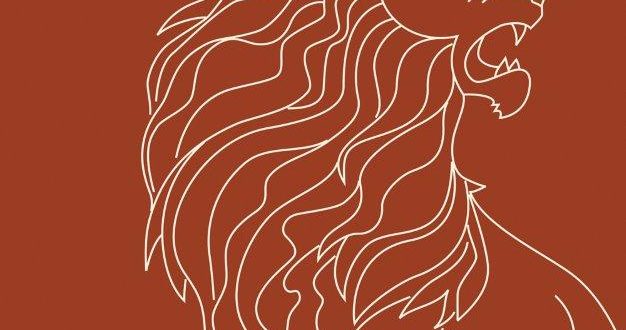Most of the Sikhs have the middle name Singh — which means lion in English. Sikhs have displayed the qualities of a lion by being fearless, powerful and risk-taking in many aspects. But when it comes to treatment of their women, many have displayed weakness. Paper Lions a new novel by award-winning Sikh author Sohan Koonar, explores and questions this sad issue of culture in Punjab. However, along with this, Paper Lions tries to trace the effects of war, independence, partition, and the younger generation on the ancient traditions and ways of life in Punjab. Colourful, tragic, and absolutely riveting, it brings historical India to itself in the lives of its characters. The book gives amazing portrayal of a less-known Bajigar community of Punjab.
Through this book he says, ” I want to give young Sikhs and Canadians a window into the Sikh faith and history. The facts of history do not lie, the atrocities committed on all sides during partition were real and horrific. I leave it to the reader to decide redemption for my characters living in extraordinary circumstances.”

Koonar who was born in Punjab, India, and spent part of my childhood in Tanzania, East Africa. After graduating in Physiotherapy from the Christian Medical College in Ludhiana, India, he served as a medical volunteer in post-independence Bangladesh, treating the war injured, for fifteen months. He chose Canada to be his home.
In an interview with Desi Today Koonar discusses in detail about his book and why he chose to write it.
What made you write your recent book Paper Lions? What was the inspiration?
Paper Lions is the first book in a planned “Lions” trilogy set in a period that begins in pre-Second World War, undivided Punjab and takes us to the present. What motivated me to write this is the lack of Sikh/Punjabi characters and stories in English literature. While Punjabi has a very rich and unique literature that is written and read in three alphabets (Urdu,Hindi, and Gurmukhi), and it is the eleventh most popular language, spoken by almost 150 million people worldwide, there is a paucity of literature about Punjab written in other languages.
Sikhs are also not well portrayed in mainstream novels and films, where they are often caricatured. Bollywood and Hollywood deserve a lot of blame for that.
I started on this quest in order to build a legacy for my children and grandchildren, with the hope that subsequent generations of the Sikhs/Punjabi diaspora get a better understanding of their ancestral home, its culture and traditions. Also, Punjab is not Sikhs alone, it is home to a number of other ancient peoples, like the Bajigars.
I hope my efforts encourage others to write on this subject and create a wealth of Punjabi content that is read in a multitude of languages, so that people better understand the men in turbans and the women in salwar/kameez.
What made you select your setting as Punjab and undivided India?
The history of today’s Punjab and India cannot be understood without knowing the history of undivided India and the calamity of Partition and its reverberations that are still felt today. I thought that starting the story in 1937 would set the table nicely for a historical/literary novel that would span the two major events that are burnt into the conscience of Punjabis everywhere and of all faiths.
I decided to tell the story with all its scabs and scars, without prejudice or judgment. My readers can make up their own minds on its merits.
As I had decided to include an exotic, tribal Bajigar woman as one of the main protagonists, I embarked on a year-long journey of meticulous research about this complex culture and its history. There are no written, detailed historical documents of the Bajigars, and I was lucky to find an elderly Bajigar oral historian who helped me to put together enough background to make Basanti a credible representative of her people.
Please tell us something about the title of the book?
All Sikhs have the middle name Singh, meaning lion. Like Paper Lions, the next two books in the trilogy will have “Lions” in the title.
Readers will learn as they progress through the novels that women did not fare well in those times, including Sikh women in patriarchal homes. The Sikh faith celebrates women as equals and gives them the middle name Kaur, meaning Princess.
I am disappointed in my fellow Sikhs because of their elevation of sons at the expense of daughters, who are seen as a burden, and this disappointment is reflected in this narrative. The title Paper Lions is not intended to suggest that those of my religion are weaklings, but it does imply that they display weakness with respect to this treatment of their womenfolk.
With this sadness in mind, a working title for this first novel was A Crowd of Sorrows, but it was generally felt, by both my Canadian and Indian publishers (the novel will be available and distributed in seven countries this month) that this title did not do justice to the range of feeling that is evoked in this sweeping narrative.
I am now in the process of writing the next novel, Wounded Lions.
Your book explores lives of three different characters over almost 3 decades if Indian history. Are the characters inspired by any real life people or personal experiences? Did you or your family member go through any of the major event that your book describes — like Sikhs in Army, partition or elections?
That is a frequently asked question. The answer is no. None of the characters, stories, or events are taken from my experiences or the experiences of my family.
The village of Raikot is an iteration of my own birth village, Kot Gangu Rai, which is geographically placed near Nilon Bridge and near the Ludhiana-Samrala-Chandigarh Road. There are references to Doraha and several known villages in the vicinity, and we have the Naag Baba temple and celebrate it with a huge annual fair.
The story and the characters are entirely fictional and my creations.
How do you think Punjabi’s and second generation of Sikhs born in other countries would be able to relate to it and what is it they take from this novel?
This novel is for our second and third generation Indo-Other Nationals. My sincere hope is that many of them read it and get a better understanding of our history, and particularly of the coming of age of the newly independent India and its people.
As parents we tend to glorify our ancestry and create a mistaken and often misunderstood vision of our history and culture in the lands we left behind. I believe the new generations will appreciate a much clearer, more unvarnished version.
As in the case of Basanti, poverty and abuse do not define the heroism of most women, who are capable of rising above it to face their fate and seize it.
The novel talks about land disputes, addiction, dowry and women as subservient to males during those times. However, Punjab as a state is still struggling with these issues. Even these issues ail Indo-Canadian society too. What would you like to say?
Paper Lions is a mirror for our society, both in Canada and back in India. We look into this mirror and see a truer reflection of us, our values and proclivities, the dichotomy of faith and observance. I can honestly say that as Sikhs we seem to have lost our way. Our post-independence leaders and their parochial pursuits set Punjab on a ruinous path of dynastic politics, poor governance, a dilution of the sanctity of our shrines and temples. A rampant corruption has seeped into the conscience of Punjab and rotted its spirit. The youth today are disillusioned and desperate, turning to addiction, gangsterism, and crime. This is true in Punjab but also in some pockets of Canada. I pray for better days and outcomes.
What do you think is most memorable moment for you while writing this novel?
There were quite a few memorable moments while writing this novel. It took five years and seven complete rewrites. The main highlights were being signed by my literary agent Sam Hiyate of the Rights Factory and coming under his tutelage and guidance; finding the perfect editor in Catherine Marjoribanks; receiving the offers to publish from Mawenzi House in Canada and Speaking Tiger in India for South Asia; and then holding the final, printed version edited by the eminent, award-winning author M.G. Vassanji.
The true highlight, though, is hearing from readers who give me the most precious gift as a writer: their praise!I feel blessed and truly grateful.
 Desi Today Magazine
Desi Today Magazine




